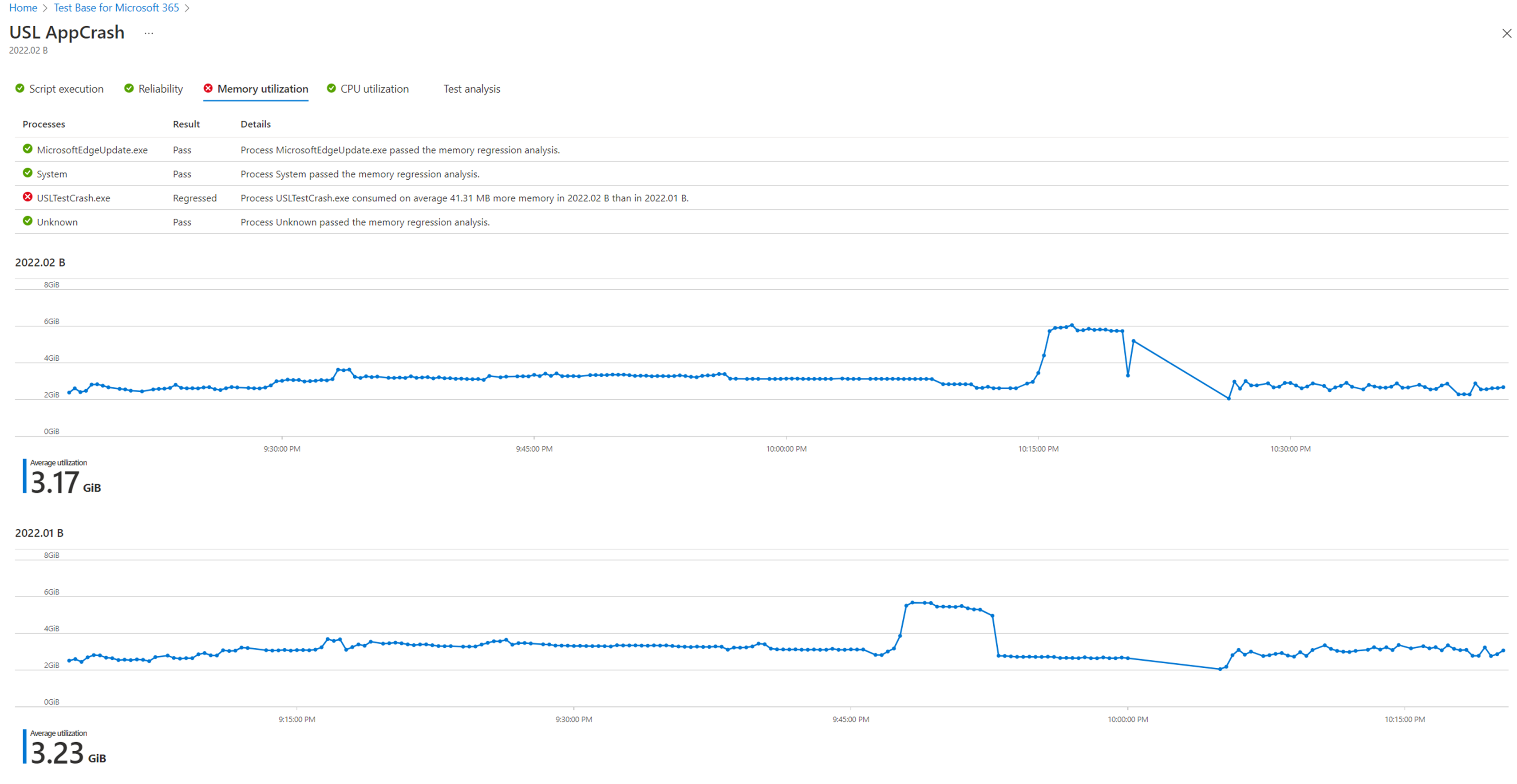Understanding Memory Regression Analysis
Important
Test Base for Microsoft 365 will transition to end-of-life (EOL) on May 31, 2024. We're committed to working closely with each customer to provide support and guidance to make the transition as smooth as possible. If you have any questions, concerns, or need assistance, submit a support request.
As a performance metric, memory usage can be an indication of overall application health. With Test Base, you can readily observe increasing memory usage of the test virtual machines (VMs) that are hosting your application/s, as it occurred during a test run.
For all test runs in the Test Base service, memory signals are captured in the Memory utilization tab. The example that follows shows a recent test run against a February 2022 OS security update, with an onboarded application named “USL AppCrash” (a test application written to illustrate regressions).
Figure 4. Memory utilization data graph
Note
In the previous graph, process utilization may not have lined up exactly, due to different factors in the execution of a test.
In the former example, the process "USLTestCrash.exe" consumed an average of 41.31 MB more memory in the February release (2022:2B) compared to the January release (2022:1B), causing Test Base to identify a regression in memory utilization, as shown in the Processes table. The other processes shown in the table are also relevant to the same application but consumed approximately the same amount of memory for each of the two releases, therefore the indicated result is Pass for these processes.
Note
The consumption of more memory is not necessarily an indication of a failure.
The regression on the relevant process was determined to be statistically significant, so the Test Base service exposed this difference to the user in the Processes table. At times, memory utilization can be somewhat noisy, so in some cases, Test Base uses statistical methods to distinguish across builds and releases as to whether there are meaningful differences.
Feedback
Coming soon: Throughout 2024 we will be phasing out GitHub Issues as the feedback mechanism for content and replacing it with a new feedback system. For more information see: https://aka.ms/ContentUserFeedback.
Submit and view feedback for
